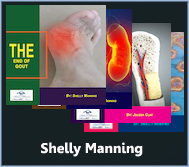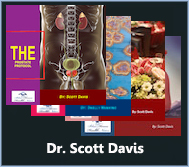Parkinson’s disease is a complex neurodegenerative disorder characterized by a range of motor and non-motor symptoms. While there are numerous symptoms associated with Parkinson’s disease, here are 40 commonly observed ones:
- Tremors: Involuntary shaking, typically starting in the hands or fingers.
- Bradykinesia: Slowness of movement.
- Rigidity: Stiffness of the limbs and trunk.
- Postural instability: Difficulty maintaining balance and coordination.
- Gait disturbances: Changes in walking pattern, such as shuffling steps or freezing.
- Micrographia: Small, cramped handwriting.
- Masked face: Reduced facial expression or “mask-like” appearance.
- Speech changes: Softening of voice, slurred speech, or monotone speech.
- Dystonia: Involuntary muscle contractions causing abnormal movements or postures.
- Akinesia: Difficulty initiating movement.
- Fatigue: Persistent tiredness or lack of energy.
- Pain: Musculoskeletal pain, stiffness, or discomfort.
- Sleep disturbances: Insomnia, restless legs syndrome, or rapid eye movement sleep behavior disorder (RBD).
- Constipation: Difficulty passing stool.
- Urinary problems: Urinary urgency, frequency, or incontinence.
- Sexual dysfunction: Decreased libido, erectile dysfunction, or difficulties with arousal or orgasm.
- Cognitive impairment: Mild cognitive impairment, memory problems, or executive dysfunction.
- Dementia: Progressive decline in cognitive function affecting daily activities.
- Depression: Persistent sadness, hopelessness, or loss of interest in activities.
- Anxiety: Excessive worry, nervousness, or fear.
- Apathy: Lack of motivation or interest in activities.
- Hallucinations: Sensing things that are not real, often visual or auditory.
- Delusions: False beliefs or suspicions.
- Orthostatic hypotension: Drop in blood pressure upon standing, leading to dizziness or lightheadedness.
- Seborrheic dermatitis: Skin condition characterized by oily, red patches on the scalp, face, or other areas.
- Drooling: Excessive saliva production or difficulty swallowing.
- Dysphagia: Difficulty swallowing.
- Masked seborrhea: Oily skin with or without acne, particularly in the T-zone of the face.
- Olfactory dysfunction: Impaired sense of smell.
- Excessive sweating: Increased perspiration, particularly in the hands or feet.
- Impulse control disorders: Compulsive behaviors such as gambling, shopping, or eating.
- Restless legs syndrome: Unpleasant sensations in the legs, often relieved by movement.
- Sensory symptoms: Numbness, tingling, or burning sensations.
- Hypophonia: Reduced volume or projection of voice.
- Dysarthria: Difficulty articulating speech.
- Hypomimia: Decreased facial expression.
- Swallowing difficulties: Difficulty moving food or liquid from the mouth to the stomach.
- Mood swings: Rapid changes in mood or emotional state.
- Difficulty turning in bed: Problems with mobility and positioning during sleep.
- Hypokinesia: Reduced amplitude or force of movement.
It’s important to note that not all individuals with Parkinson’s disease will experience all of these symptoms, and the severity and progression of symptoms can vary widely among patients. Additionally, some symptoms may be more prevalent in advanced stages of the disease. Proper diagnosis and management by healthcare professionals are essential for addressing the specific needs of individuals with Parkinson’s disease.





